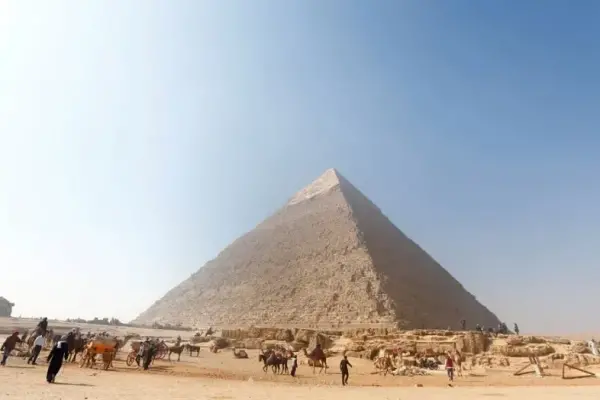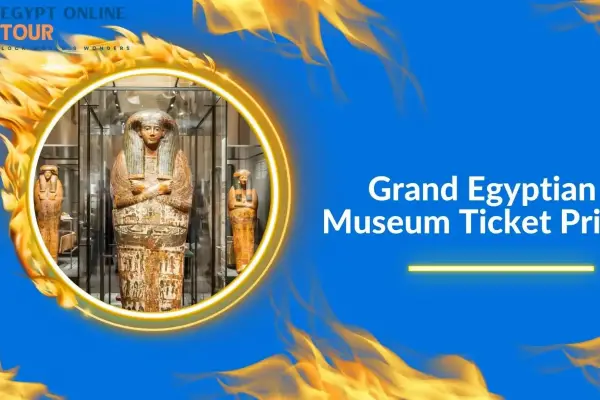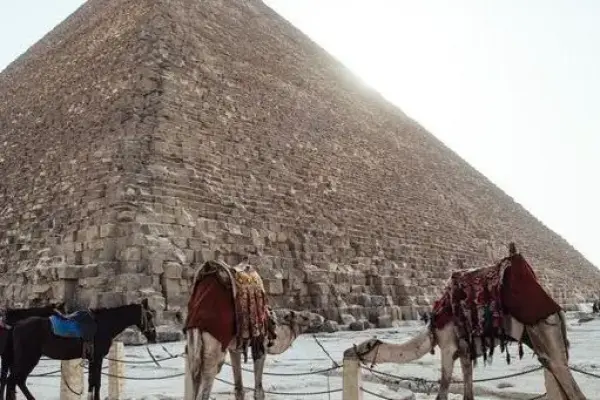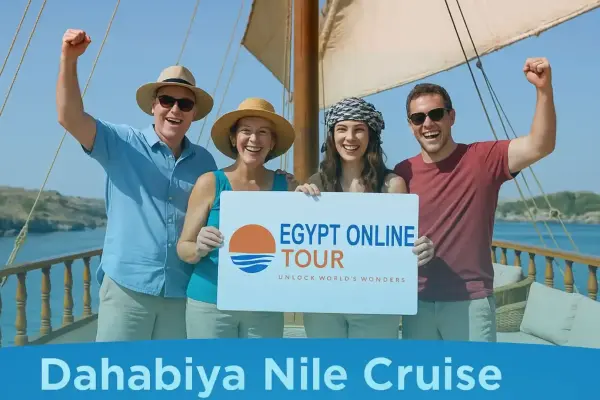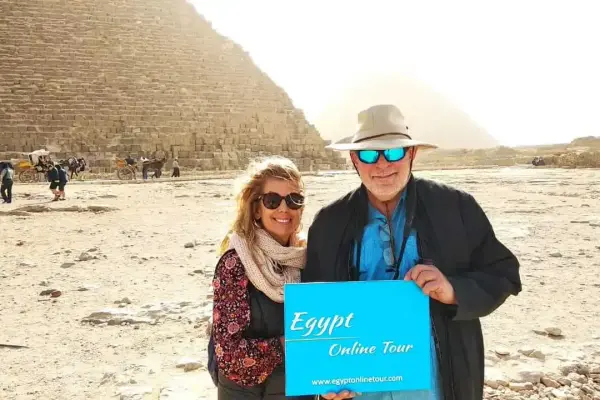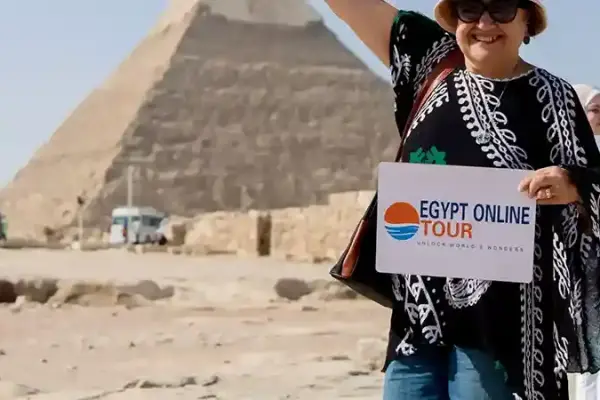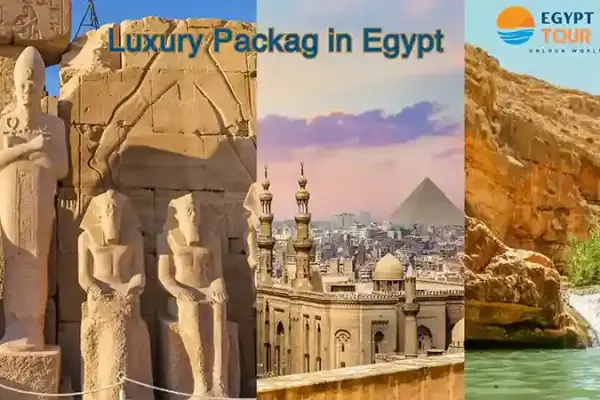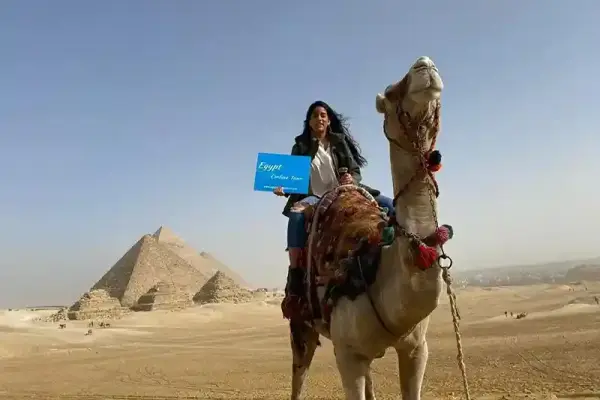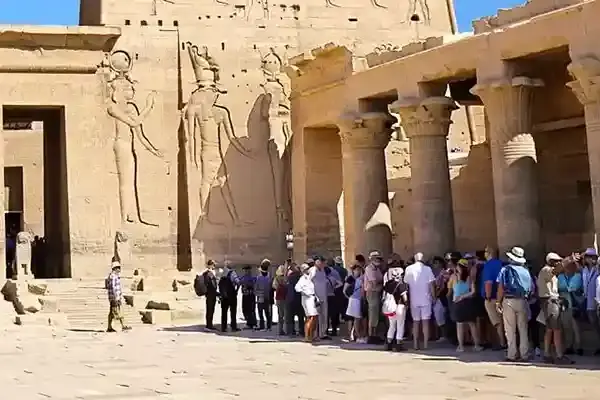Egyptian Symbols to Provide Protection and Peace for Your Journey
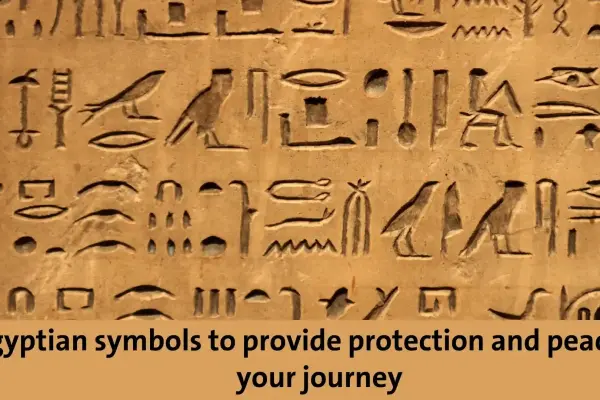
- Jan 31, 2025
- Ancient Egyptian Civilization
- 2,510
The Egyptians believed that those sacred symbols, which include the Eye of Horus that nourishes or the Ankh that offers existence, held the electricity to satisfy their unseen desires and convey peace to their hearts. From the glowing Nile to the body of workers of Shahrawi, this writing changed into assured with the aid of using depended on pirates, in prisons covered with the aid of using divine safety and consideration.
Discover the Egyptian symbols to provide protection and peace for your journey and those historic secrets and techniques and the tale at the back of every image.
Table of contents [Show]
- What is the Egyptian image of safety?
- Follow the Sacred Path with Our Holy Land Tours
- The Ankh: The Key to Eternal Life and Protection
- The Scarab Beetle (Khepri): Symbol of Renewal and Protection Against EvilIn
- Scarab: An effective amuletIn phrases of safety
- The Cobra (Uraeus): Divine Guardianship and Power
- Discover the Wonders of Egypt with Our Exclusive Tour Packages
-
Egyptian Symbols to Provide Protection and Peace for Your Journey
- Ankh (Key of Life)The ankh
- Eye of Horus (Wadjet)
- Was Scepter
- The Scarab
- The image of "Sa" (safety)
- Lotus Flower
- The winged solar
- Feather of Maat (Justice)
- Scorpion (image of the goddess Serket)
- Goddess Bastet (The Cat)
- Cobra (Wadjet)
- Head of Anubis
- Solar Boat
- Djed Pillar
- Double Wing
- The Royal Cartouche
- Goddess Isis Holding the AnkhIsis
- Crocodile (Sobek)
- Double Serpent
- Blue Bead
-
List of Famous Ancient Egyptian Symbols With Meanings: 60 Famous Ancient Egyptian Symbols (Meanings & Facts)
- Ankh (Key of Life)
- 2.Neighbors 𓈎
- 3. Ushabti 𓎢
- 4. Lotus Flower 𓇨
- 5.Eye of Horus (Wadjet) 𓂋
- 6.Solver of Alos 𓎼𓉔
- 7. Djed Pillar 𓊃
- 8. Scorpion 𓆑
- 9. Falcon of Horus 𓅓
- 10.Head of Anubis 𓄿
- 11. Cobra (Wadjet) 𓆓
- 12. Sun of Wings 𓎼
- 13. Isis Holding Ankh 𓅓
- 14. Dom Palm 𓇨
- 15.Keyword 𓉔
- 16. Feather of Maat (Justice) 𓆯
- 17. Rope of Shan 𓋴𓉔𓄿
- 18. Symbol of "Ka" (Spirit) 𓈎𓄿
- 20. Hathor Cow
- 21. Virtual King on Throne 𓈎
- 22. Ba Bird (Spirit)
- 23. Solar Boat ⛵
- 24. Ankh with Wings 🦇
- 25. Intellectual Property 𓂋𓇋
- 26.Royal Cartouche 𓃀
- 27. Dwarf Bes 𓃀𓋴
- 28.Lion Sphinx 𓋴𓊪𓉔𓇋𓈖𓇨
- 29. Amon with Ram's Head 𓄿𓅓
- 30. Nile Symbol (Water Rope) 𓈖
- 31. Royal Ribbon 𓂋𓇋𓃀𓃀𓈖
- 32.Sidra Pillar 𓂧𓂋𓄿
- 33. Sun Beetle ☀️𓋴𓅲
- 34. Thoth Monkey 𓅓🐒
- 35. Double Wing 𓅃𓇋𓈖𓎼
- 36. Buy 𓃀𓅲𓇌
- 37. My Papers 𓊪
- 38. Hor Imhotep (Physician) 𓉔𓂋
- 39. Eye of Ra 𓂋
- 40. Head Falcon 𓄿
- 41. Statue of the Kneeling King 𓈎𓇋𓈖𓎼
- 42.رSacred Hand 𓉔𓄿𓈖𓂧
- 43. Royal Spear 𓋴𓊪𓄿𓂋
- 44. Lioness Sekhmet 𓃭𓇋𓈖𓋴𓋴
- 45. Symbol of Remembrance (Shen) 𓋴𓉔𓈖
- 46. Intertwined Lotus and Flower 𓃭𓏏𓅲𓋴
- 47. Sacred Peacock 𓊪𓄿𓎢𓎢𓈎
- 48. Mummification Tools 𓅓𓅲𓅓𓅓𓇋𓆑𓇋𓎢𓄿𓏏𓇋𓈖
- 49. Head of Crocodile (Sobek) 𓎢𓂋𓎢𓂧𓇋𓃭
- 50. God Ra Horus 𓉔𓂋𓅲𓋴
- 51. New 𓈖𓅃
- 52. Cosmic Serpent 𓋴𓂋𓊪𓈖𓏏
- 53. Royal Bead Chain 𓎢𓉔𓄿𓇋𓈖
- 54. Symbol of "Sa" (Protection) 𓋴𓄿
- 55. Head of Dog (Anubis) 𓄿𓈖𓅲𓃀𓇋𓋴
- 56. Sacred Fish 𓆑𓇋𓋴𓉔
- 57. Owl Symbol of Wisdom 𓅃𓃭
- 58. Royal House 𓂋𓇌𓄿𓃭 𓉔𓅲𓋴
- 59. Goddess Bastet (Cat) 𓎢𓄿𓏏
- 60.Phoenix (Benu) - 𓅲
- A Blend of Relaxation and Adventure
- Find the Perfect Egypt Tour for You
What is the Egyptian image of safety?
In historic Egyptian culture, symbols performed an important position in conveying religious and sensible meanings. Among those symbols, the safety image sticks out as an effective brand that protects people from damage and evil. The Egyptians believed in the shielding electricity of certain symbols, which had been frequently utilized in amulets and talismans to ensure protection and health. Here are the maximum well-known symbols used for safety inside the Pharaonic civilization.
The Eye of Horus (Wedjat): A Divine Symbol of Protection and Healing
The Egyptians used wedges as a shielding amulet, believing they might beat back evil spirits, shield travelers, and ensure the health of the dwelling and the dead. They had been frequently positioned on mummies to shield the soul’s adventure to the afterlife, reinforcing their position as guardians throughout the realms.
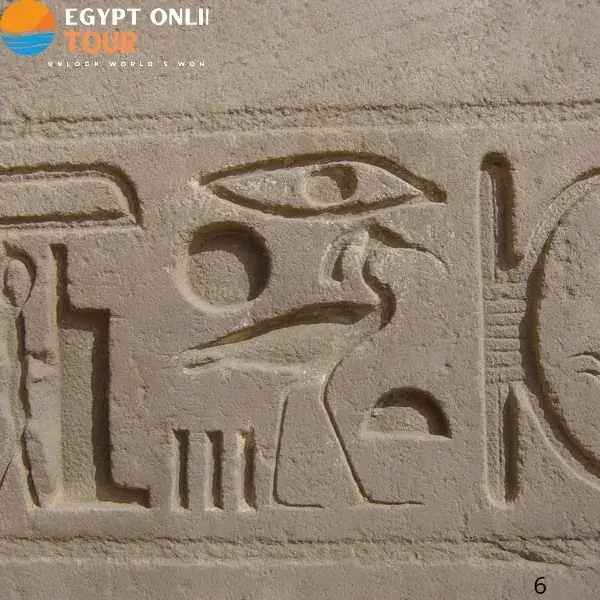
The Eye of Horus: A Symbol of Protection and Healing
The Eye of Horus is one of the maximum iconic symbols of historic Egypt, recognized for its robust institutions with safety, recuperation, and health. This historic image is frequently depicted as a stylized eye, corresponding to a human eye with a completely unique mark, representing the attention of the god Horus, the sky god, and protector of Egypt. In Egyptian culture, the Eye of Horus was believed to preserve magical residences that supplied safety towards evil, disease, and danger.
The Myth Behind the Eye of Horus
The tale of the Eye of Horus dates returned to Egyptian mythology. According to the legend, Horus, the son of Osiris and Isis, fought a warfare against his uncle Seth, the god of chaos and disorder. During the warfare, Seth wounded Horus, adverse his eye. The eye was restored with the aid of using the god Thoth, the god of expertise and writing, who used his magical powers to heal the injury. As a result, the Eye of Horus has become an image of recuperation and wholeness, representing the god’s potential to heal and regenerate.
Follow the Sacred Path with Our Holy Land Tours
Egypt holds a special place in Christian history, with sacred sites that have been visited by pilgrims for centuries. Walk in the footsteps of the Holy Family and explore the most significant biblical landmarks with our specially curated tours.
A Spiritual Journey Through Egypt
Embark on a deeply moving experience with the 15 Days Egypt Holy Family Trip Follow the journey of the Virgin Mary, Joseph, and baby Jesus as they traveled through Egypt, visiting sacred monasteries, churches, and biblical landmarks.
For a more extensive pilgrimage experience, our Christian Holy Land Travel Tours Packages offer a profound exploration of religious sites across Egypt and the Holy Land. Discover ancient churches, historic pilgrimage routes, and sites of deep spiritual significance.
If you're seeking a fully immersive pilgrimage, our Holy Land Tours Packages provide a once-in-a-lifetime opportunity to visit some of the most revered Christian destinations, ensuring a journey of faith, reflection, and connection.
Symbolism and Meaning
The Eye of Horus is frequently related to numerous concepts:
1. Protection: The Eye of Horus changed into believed to have the electricity to shield people from damage, danger, and evil forces. It was usually worn as an amulet or talisman, and Egyptians used it to shield their bodily and religious health.
2. Healing: The recovery of the attention with the aid of using Thoth made it an image of recuperation and recuperation. It changed into frequently positioned in tombs or worn with the aid of using the dwelling to make sure fitness and recuperation from infection or injury.
3.Completeness and Balance: The Eye of Horus additionally symbolizes completeness and stability.The distinct components of the attention constitute fractions that upload as much as a whole, symbolizing the concept of team spirit and stability in existence. Uses of the Eye of HorusIn historic Egypt, the Eye of Horus was extensively utilized in amulets, jewelry, and different kinds of art. Individuals wore it to shield themselves from bad forces and make sure right luck.
The Eye of Horus: the idea of Maat
The image additionally seemed in burial practices, frequently positioned withinside the tombs of the deceased to shield the soul’s adventure to the afterlife.Its use changed into now no longer constrained to the dwelling however prolonged to the afterlife, in which it changed into believed to offer safety and recuperation for the deceased.
The Eye of Horus changed into intently related to the idea of Maat, the Egyptian concept of stability, order, and justice. Horus, because the god of the sky and protector, embodied Maat, and the attention changed into visible as a device for retaining concord and order, each inside the human global and inside the divine realm.
Modern Use of the Eye of HorusToday
The Eye of Horus remains a famous image. Many human beings nevertheless put on it as a talisman or amulet, believing in its shielding and recuperation powers. Its affiliation with historic Egypt and its wealthy records of symbolism make it an effective reminder of the long-lasting legacy of Egyptian culture.
The Eye of Horus is likewise located in contemporary-day art, jewelry, and tattoos, in which it symbolizes safety, strength, and stability.
Wilkinson highlights the mathematical importance of the attention’s components, which had been related to fractions and represented completion, including any other layer to its symbolic depth. The eye changed into more than only a spiritual image—it changed into a supply of religious electricity, supplying consolation and protection to people who respected it. Watch the attention of Horus in fact inside Eight Days Cairo to Abu Simbel and Back Overland
The Ankh: The Key to Eternal Life and Protection
According to The Complete Gods and Goddesses of Ancient Egypt with the aid of using Richard H. Wilkinson, the Ankh stands as one of the maximum enormous symbols in Egyptian culture, frequently known as the "Key of Life." This easy but profound brand represents existence, immortality, and the everlasting cycle of lifestyles.
The Ankh's one-of-a-kind shape, corresponding to a go with a loop on the top, symbolizes each the bodily global and the divine realm, bridging the 2 with the promise of eternal existence.
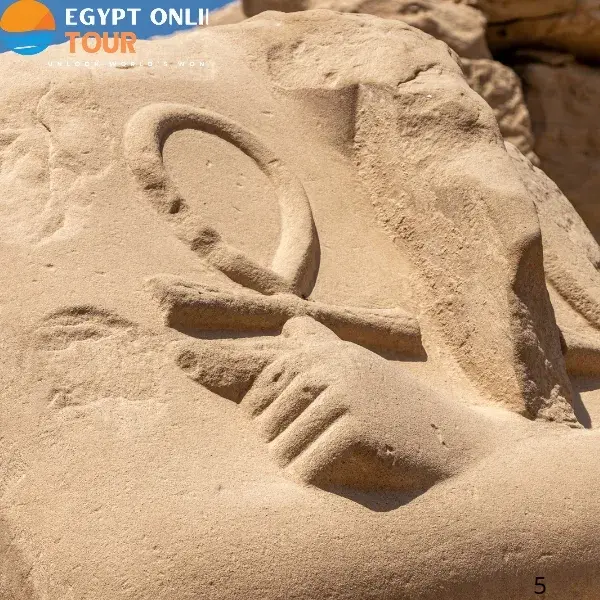
The foundation of the Ankh
The foundation of the Ankh is tied to the gods themselves, maximum considerably to Isis and Osiris.In Egyptian mythology, Isis, the goddess of magic and motherhood, used the Ankh to restore her husband Osiris, who changed into killed with the aid of using his brother Seth.
The Ankh have become an image of each existence and resurrection, taking pictures the essence of divine safety and the continuity of lifestyles past death.
In day-by-day lifestyles, Egyptians carried the Ankh as an amulet to ensure lengthy lifestyles and proper health, believing it may provide safety from misfortune and push back evil. It changed into typically depicted withinside the arms of gods and pharaohs, reinforcing its affiliation with royal electricity and divine authority.
Additionally, the Ankh changed into regularly proven being held to the nostrils of deceased people in tombs, symbolizing the granting of lifestyles after death, and making sure a nonviolent adventure to the afterlife.
The Ankh's enduring presence in Egyptian artwork and lifestyle displays its deep connection to each bodily and nonsecular well-being, supplying each safety and a promise of everlasting lifestyles.
The Scarab Beetle (Khepri): Symbol of Renewal and Protection Against EvilIn
The Complete Gods and Goddesses of Ancient Egypt through Richard H. Wilkinson, the Scarab Beetle, mainly represented through the deity Khepri, is an image of renewal, rebirth, and safety.
The scarab beetle changed into carefully related to the day-by-day growth of the solar, because the beetle rolls its ball of dung throughout the ground, akin to the solar's motion throughout the sky.
This symbolic connection connected the scarab with the cycle of lifestyles, death, and rebirth. The god Khepri, regularly depicted as a person with the top of a scarab, changed into believed to push the solar throughout the sky, making sure the cycle of day and night time continued.
Egyptians related Khepri with the renewal of lifestyles, and the scarab itself has become an image of transformation and nonsecular rebirth. The idea of renewal prolonged past the bodily realm, representing the everlasting nature of the soul, which changed into believed to be constantly reborn.
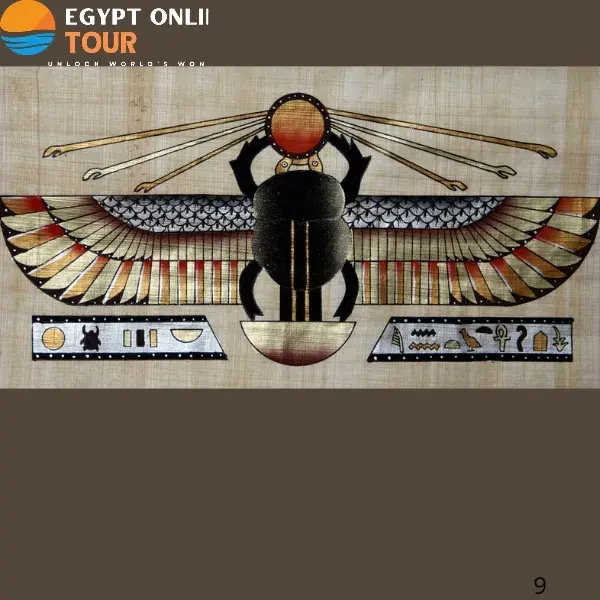
Scarab: An effective amuletIn phrases of safety
The scarab changed into taking into consideration an effective amulet. Egyptians wore scarab-fashioned earrings or positioned them in tombs to defend the deceased from evil spirits and terrible forces. Scarabs have been regularly inscribed with prayers or advantages for the afterlife, serving as talismans to make sure that the soul might be safeguarded at some point of its adventure.
The scarab's sturdy affiliation with the solar additionally connected it to the concept of illumination, dispelling darkness and evil from one’s lifestyle. Enjoy viewing Egyptian symbols and their divine electricity at the Grand Egyptian Museum Tour.
The Cobra (Uraeus): Divine Guardianship and Power
The Uraeus, represented through the cobra, is one of the maximum effective symbols in historic Egypt, carefully connected to divine guardianship, safety, and royal electricity. In Wilkinson’s exploration of Egyptian deities and symbols, the Uraeus is regularly depicted as a rearing cobra, poised to strike. It changed into maximum typically worn through the pharaohs as a crown or headdress ornament, symbolizing their authority and divine safety.
The Uraeus changed into related to Wadjet, the cobra goddess of Lower Egypt, who changed into the protector of the pharaohs and the land. Wadjet changed into believed to provide her venomous safety in opposition to any threats, specifically at some point of the battle, because the pharaoh changed into visible because of the dwelling embodiment of the divine on Earth. The rearing cobra at the pharaoh’s crown represented the goddess's electricity to strike down enemies, ensuring the king's protection and success.
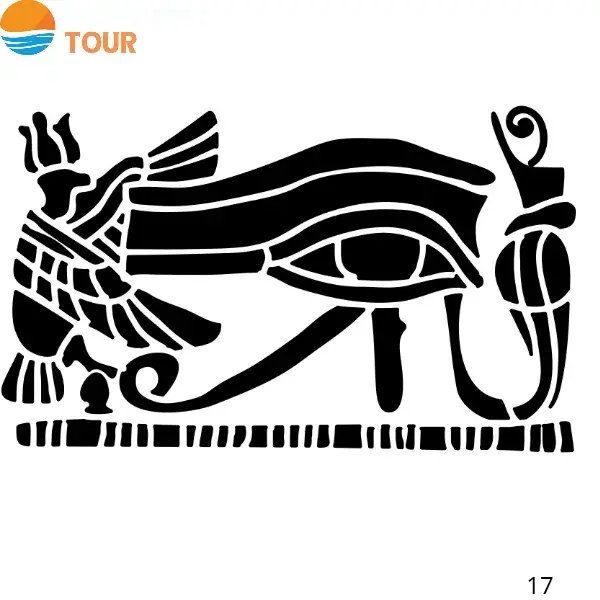
Divine electricity
The Uraeus symbolized now no longer the handiest safety however additionally the divine electricity and electricity granted to the pharaohs. The cobra's capacity to strike fast and with precision made it a becoming brand for a ruler who changed into each effective and invincible. The Uraeus changed into additionally believed to shield the pharaoh's adventure into the afterlife, ensuring his safety as he crossed into the world of the gods.
Additionally, the Uraeus changed into regularly positioned in tombs or temples to defend sacred spaces, emphasizing the cobra’s position as a dad or mum of each the dwelling and the dead. It symbolized the everlasting vigilance of the gods, making sure divine justice and safety for the pharaoh, the people, and the land of Egypt.
Both the Scarab Beetle (Khepri) and the Uraeus Cobra convey rich, multi-dimensional meanings in the Egyptian lifestyle. They now no longer handiest encompass standards of safety, renewal, and divine guardianship however additionally illustrate the profound connection Egyptians had with their gods and the forces that ruled each the bodily and nonsecular realms. These symbols served as effective equipment for ensuring protection, balance, and prosperity in lifestyles and after death.
Discover the Wonders of Egypt with Our Exclusive Tour Packages
Egypt is a land of timeless beauty, where history meets adventure and luxury blends with tradition. Whether you're seeking a journey through ancient temples, a relaxing cruise along the Nile, or a lavish getaway, we have the perfect package for you!
Unforgettable Egypt Tour Experiences
Step into the heart of history with our 5 Days Cairo to Luxor Tour Packages , where you’ll explore the Great Pyramids, the Sphinx, and the mesmerizing temples of Luxor.
For those looking for a more extended adventure, our 12 Days Pyramids, Nile & Sinai Tour offers an incredible journey covering Egypt’s top landmarks, from the pyramids to the sacred Sinai Mountains.
Experience the magic of the Nile with the 10 Days Round Trip Nile Cruise and Pyramids , combining luxury sailing with the awe-inspiring monuments of ancient Egypt.
Egyptian Symbols to Provide Protection and Peace for Your Journey
Bottom of FormIn Richard H. Wilkinson’s ee-ebook Symbols and Magic in Egyptian Art, Egyptian symbols aren't simply decorations; they may be effective magical and shielding devices. The Egyptians believed that symbols inclusive of the Eye of Horus, the Ankh, and the beetle should guard vacationers from damage and make certain peace on their journeys, each on this existence and inside the afterlife. Wilkinson asserts that those symbols have been now no longer the most effective bodily amulets, but, additionally, effective magical entities that related the earthly global to divine safety.
Whether worn at the body, in tombs, or in normal existence, those symbols ensured secure passage and a nonviolent soul. Here are a number of the maximum wonderful of those symbols:
Ankh (Key of Life)The ankh
Regularly known as the “Key of Life,” is one of the maximum iconic symbols in historical Egyptian culture.It represents everlasting existence and safety from evil whilst traveling. The ankh first seemed in the course of the Early Dynastic Period (c. 3150–2613 BCE) and has become an effective image of everlasting existence inside the Old Kingdom (c. 2613–2181 BCE), referred to as the Neb-ankh.
It is carefully related to the knot of the goddess Isis, which symbolizes the bond that binds all existence together.The ankh is regularly depicted inside the fingers of pharaohs and gods, signifying their divine electricity to bestow existence and offer safety. See the grandeur of the Key of Life image in actual existence in the course of eight Days Cairo, Luxor, Aswan Classic Tours
Eye of Horus (Wadjet)
The Eye of Horus, or Wadjet, is an image of safety and electricity.It changed into believed to guard vacationers from damage and guard them from envy and evil spirits. This image is deeply rooted in Egyptian mythology, as Horus misplaced his left eye in the course of a war with Set, and changed into restored via way of means of the god Thoth. The Eye of Horus was regularly utilized in amulets and talismans to offer safety and accurate luck.
Was Scepter
The Was Scepter symbolizes balance and royal safety, and changed into regularly used to invite for protection whilst traveling. Known as the “Was,” this image represents sovereignty and electricity, and changed into regularly depicted inside the fingers of gods and pharaohs. It changed into a belief to bestow electricity and authority on its bearer, making it a critical image in historical Egyptian artwork and religion.
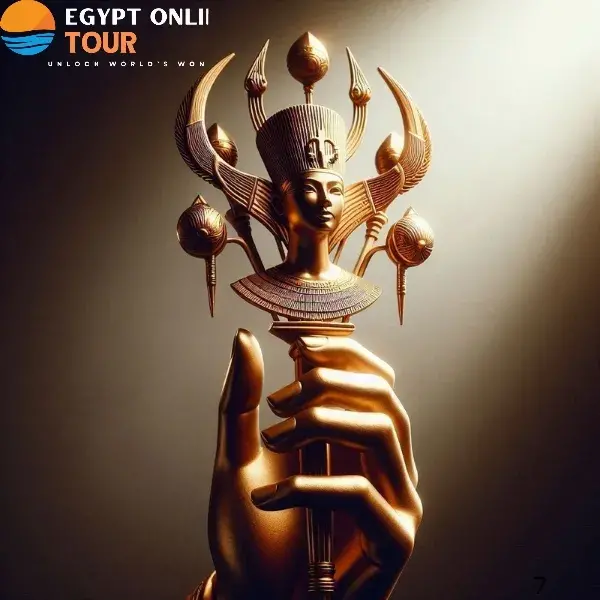
The Scarab
The scarab is one of the maximum vital symbols of historical Egypt, representing renewal, regeneration, and safety. In Egyptian mythology, the scarab is related to the solar god Khepri, who as soon as rolled the solar throughout the sky, a whole lot as a scarab rolls a mushroom ball. Scarabs have been frequently located at the our bodies of the deceased or worn as amulets to shield the soul and ensure a secure passage into the afterlife. As the well-known Egyptologist James Peter has stated: "The position of the scarab inside the Renaissance has become so vital that it has become the image of everlasting safety."
The image of "Sa" (safety)
The photo of "Sa", regularly depicted as a go-with-a-loop, is an effective signal of divine safety. The historical Egyptians used it as a shield, each bodily and spiritual, to shield themselves from danger. This photo is regularly utilized in amulets, specifically for vacationers, to shield themselves from volatile forces and evil spirits. According to In historical texts, "Sa" represented the protecting powers of the gods and has become a way of invoking divine favor. Historian Sir Alan Gardiner noted: "As it's far the very embodiment of divine safety, making sure that everyone's adventure stays intact."
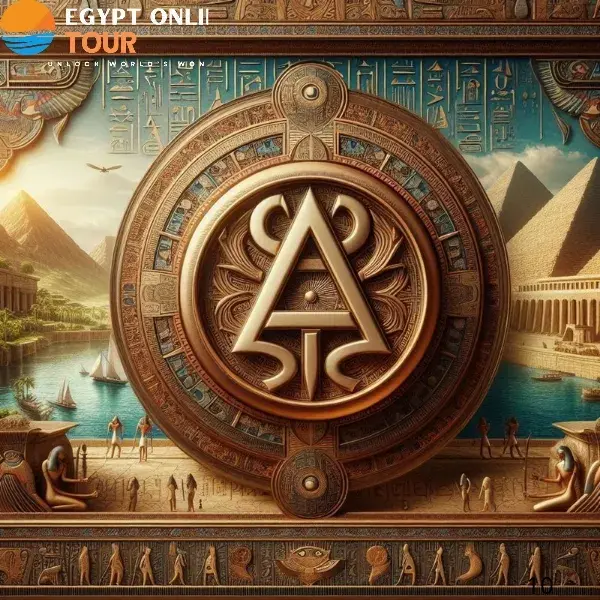
Lotus Flower
The lotus flower is a photo of purity, enlightenment, and renewal in historical Egyptian culture. It is related to the solar god Ra, who's stated to be born from a lotus that emerged from the waters of chaos. lotus flower It additionally symbolizes rebirth, because it blooms at sunrise and closes at night, representing the everlasting cycle of lifestyles and death. Travelers might also additionally convey a photo of the lotus to sell internal peace and safety at some point in their travels.
As the logician Plutarch wrote, "The lotus is the proper signal of the everlasting renewal of the soul."
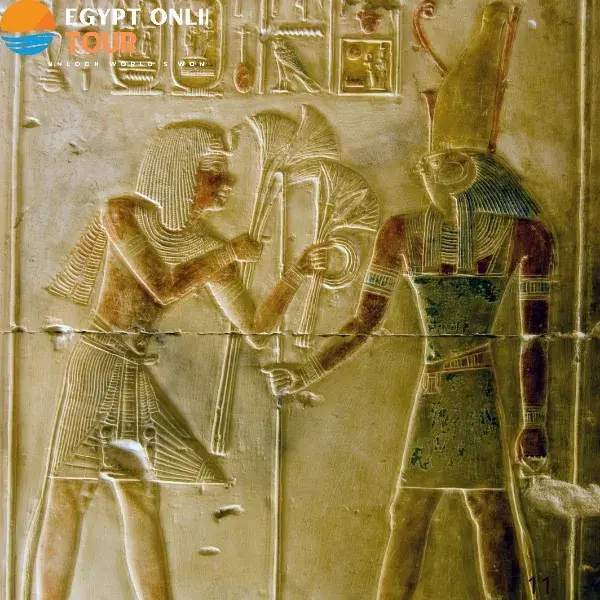
The winged solar
The winged solar symbolizes the power and safety of Ra, the solar god, and is regularly visible decorating the doorways of temples and the chariots of the pharaohs. It represents the god's capacity to manually and shield human beings at some point of their journeys. The wings of the solar signify Ra's common vigilance and safety from evil.In one myth, Ra used his wings to shield a pharaoh as he traveled through the underworld, making sure his secure passage. Egyptologist Toby Wilkinson explained: "The winged solar is a reminder that divine safety is continually present, guiding each the resi ding and the dead."
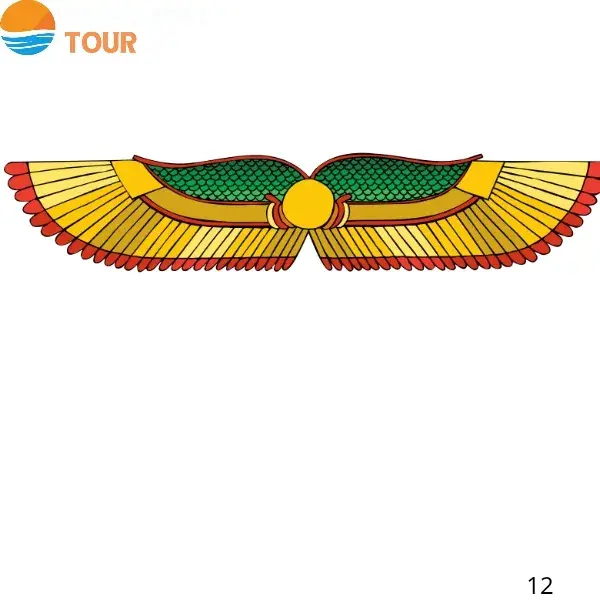
Feather of Maat (Justice)
The Feather of Maat represents balance, justice, and order, centering thoughts in historical Egyptian belief. It turned into believed that the feather weighed the hearts of the deceased inside the afterlife, figuring out their fate. During its lifetime, the photo embodied justice and cosmic order, supplying safety and calmness to vacationers. The goddess Maat has become the embodiment of reality and justice, and the invocation of her photo ensured protection at some point of lengthy journeys.
The well-known student, E.A.Wallis Budge wrote: "The Feather of Maat is the guiding precept of reality, making sure concord and protection for all who invoke it."
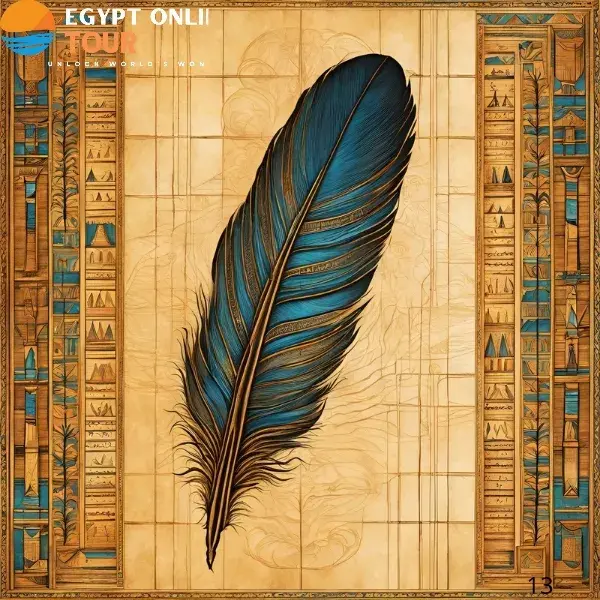
Scorpion (image of the goddess Serket)
The scorpion, frequently related to the goddess Serket, was believed to have effective defensive properties, specifically in opposition to poisons and venomous creatures. Serket, goddess of healing and safety, is frequently depicted as a scorpion, shielding the residents from the risks of the barren region and ensuring the protection of vacationers at some point of their earthly journeys.
The historical Egyptians wore scorpion amulets to shield themselves from evil.As student Zahi Hawass explains: "The scorpion is now not only a creature of the barren region; it has emerged as a divine force, able to shield its adventure from unseen risks. "
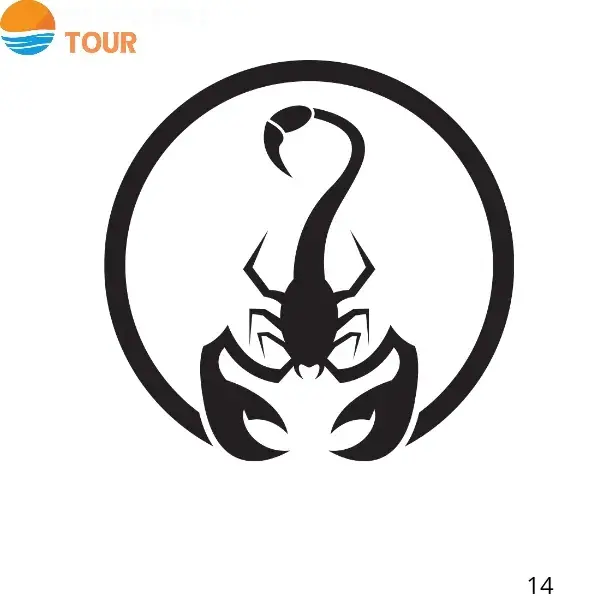
Goddess Bastet (The Cat)
Bastet, the goddess depicted as a lioness or a home cat, changed into respected as a protector of the house and a fierce parent in opposition to evil spirits. Her function in journey safety got her from her cappotential to shield the bounds of the sacred and ensure peace for the ones travelling into the unknown. Cats have been believed to have the divine cappotential to look and push back malevolent forces.In the phrases of historian Toby Wilkinson, “Bastet embodies the warm temperature and safety of the house, extending her divine vigilance to people who traveled a ways from its comfort.”
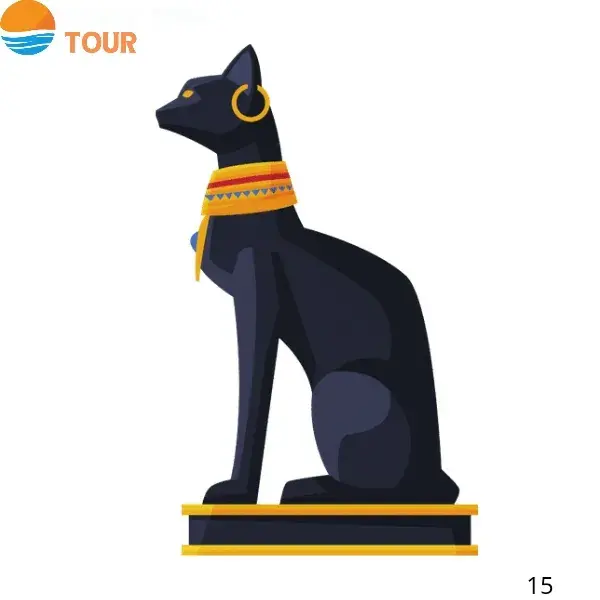
Cobra (Wadjet)
The Cobra, regularly depicted withinside the shape of the goddess Wadjet, symbolized royal safety and the safeguarding of the pharaoh. Known for her fearsome protection of Egypt, Wadjet changed into believed to guard vacationers from risks which include wild animals, thieves, or even evil spirits. The cobra’s effective venom changed into a metaphor for the godly electricity that blanketed the visitor’s path. According to Egyptologist Geraldine Pinch, “The cobra’s strike changed into swift, however, its proper electricity lay in its cappotential to shield the land, making sure secure passage for people who bore its mark.”
Head of Anubis
The Head of Anubis, depicted as a jackal-headed god, changed into an image of safety from unseen risks, specifically withinside the context of funerary rituals. Anubis changed into the god of mummification and the afterlife, overseeing the adventure of the soul to the underworld. Travelers and the deceased alike referred to as upon his safety to keep away from damage in the course of their journeys, each bodily and spiritual. Ancient texts inform of Anubis guiding the souls of the departed through risky realms. As Egyptologist Salima Ikram wrote, "Anubis stands on the threshold, shielding people who assignment into the unknown, making sure their passage is secure."
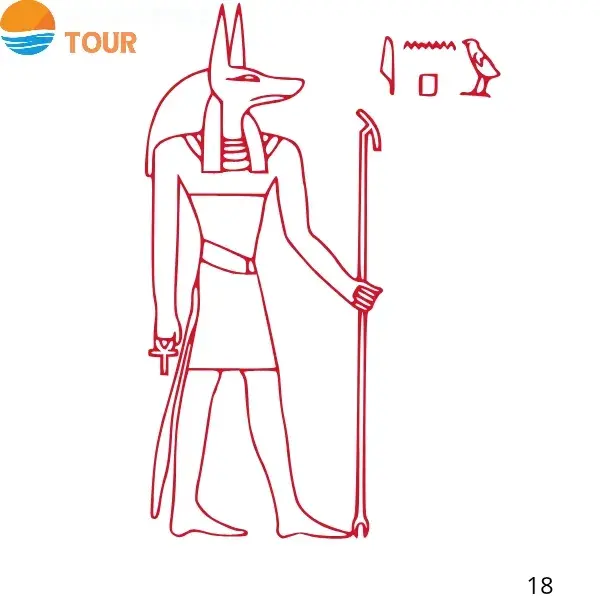
Solar Boat
The Solar Boat changed into an image intently related to the solar god Ra, representing his everyday voyage throughout the sky. This divine boat is believed to hold Ra from sunrise to dusk, making sure the cycle of existence and the protection of the solar’s journey. For vacationers, the Solar Boat symbolized safety in the course of sea voyages or river crossings. It changed into a belief to shield the person from drowning or misfortune. Historian Richard H.Wilkinson remarked, “The Solar Boat isn't always simply a vessel; it's far a divine vehicle, sporting the mild and safety of Ra throughout the waters of existence.”
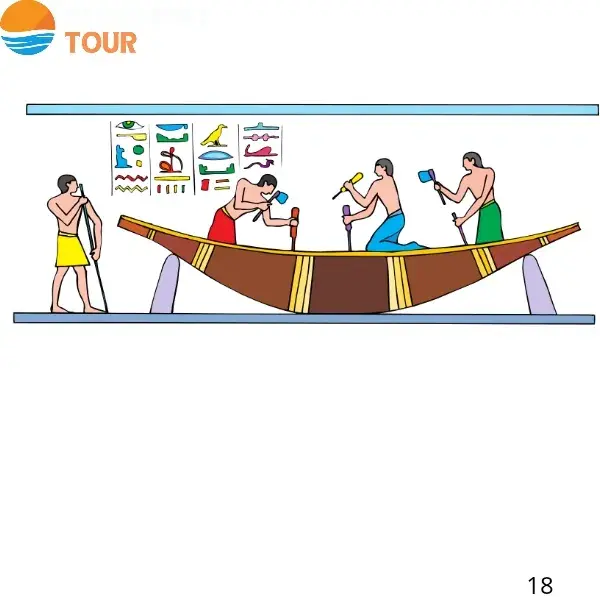
Djed Pillar
The Djed Pillar is a historical Egyptian image of stability, electricity, and persistence, regularly related to the god Osiris. It changed into a notion to symbolize the spine, symbolizing the electricity of the pharaoh and the persistence required to soundly traverse challenges.In phrases of journey, the Djed Pillar changed into believed to offer the visitor with a constant and stable path, just like the steadiness of the god it represented. As Egyptologist Zahi Hawass said, “The Djed isn't always virtually a column—it's far a pillar of divine electricity, presenting unshakable safety.”
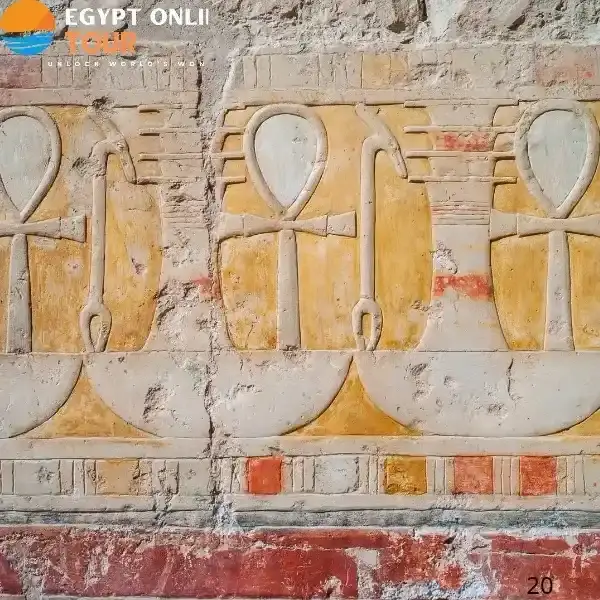
Double Wing
The Double Wing image, normally related to the deities Horus or Isis, represented divine safety and the safeguarding of the soul.Wings have been regularly visible as a method of transportation for gods, and the image changed into used to surround the visitors with divine care, ensuring their safety. Whether it changed into Horus's wings of safety or Isis's maternal include, the wings signified the gods’ steady watch over people who ventured a ways from home. As famed student Toby Wilkinson wrote, “The wings of the gods have been now no longer simply symbols; they have been the very include of protection, enveloping the visitor in divine grace.”
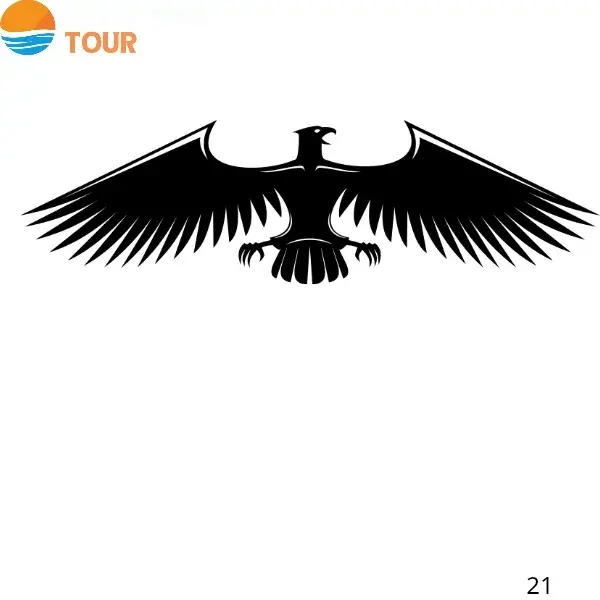
The Royal Cartouche
The Royal Cartouche, a unique oval-shaped frame containing hieroglyphs, came to be used to guard the decision of the pharaoh or a high-score individual. It symbolized divine protection and ensured that the person’s name may undergo for eternity.
For tourists, the cartouche acted as a safeguard, with the pharaoh's authority extending over them, shielding them from harm sooner or later in their journey.As Egyptologist Sir Alan Gardiner stated, "The cartouche is not most effective a mark of nobility but a divine seal of safety, ensuring that all beneath neath its protection are shielded.
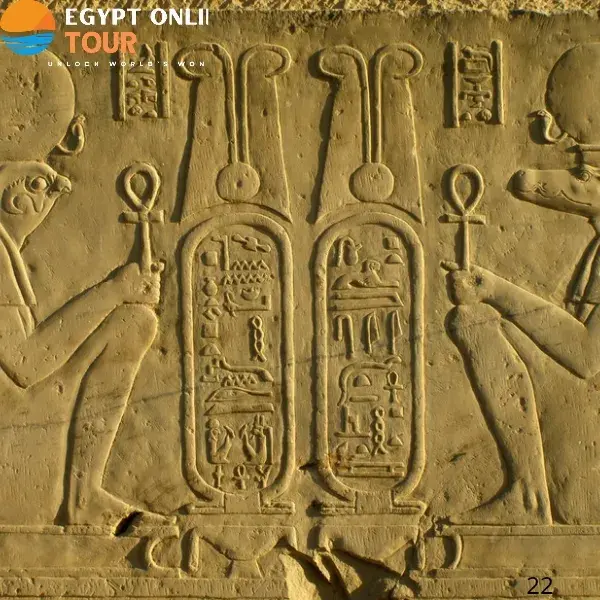
Goddess Isis Holding the AnkhIsis
one of the most cherished goddesses in Egyptian mythology, come to be frequently depicted preserving the Ankh, symbolizing life, protection, and maternal care. As a protector of the residing and the dead, she comes to be invoked for safety sooner or later of travel. Her divine strength comes to be believed to offer peace, tranquility, and guidance, mainly for those embarking on prolonged or volatile journeys. The scholar, Plutarch, wrote, acute ;Isis, the mother of all, embraces her kids with the Ankh, bringing them comfort and protection on their path.
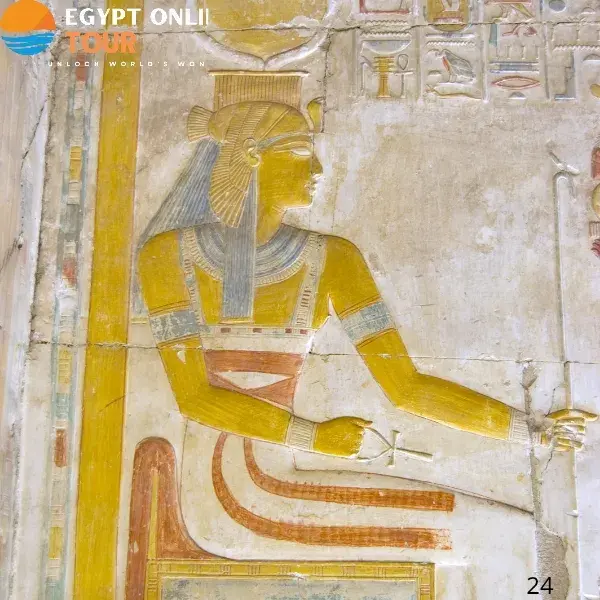
Crocodile (Sobek)
Sobek, the crocodile-headed god, represented strength, protection, and the strength of the Nile.
He come to be believed to defend tourists sooner or later of water crossings, mainly on the first-rate Nile River. His fierce nature symbolized protection in competition to dangers lurking withinside the waters, ensuring a steady and peaceful journey.
In ancient texts, Sobek comes to be described due to the fact the divine mother or father of tourists, mainly those crossing volatile waters .As historian Toby Wilkinson noted, “Sobek's presence on the water is like the protective encompass of the river itself, supplying peace amidst danger.”
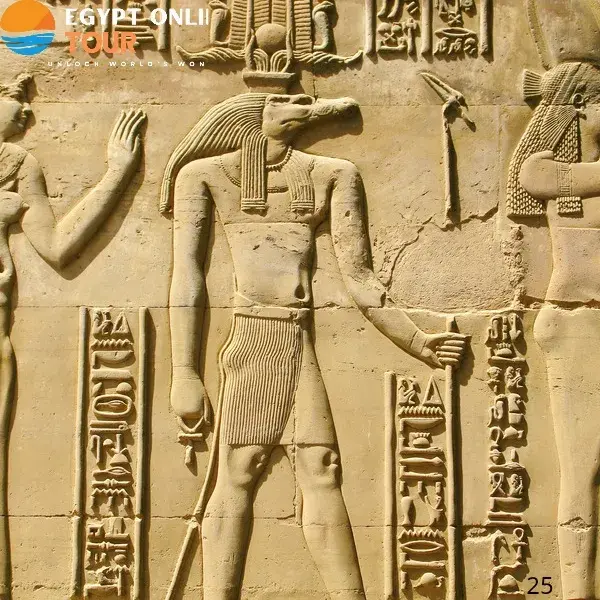
Double Serpent
The Double Serpent, frequently associated with the goddess Wadjet, symbolizes dual protection.It comes to be perceived to beat back evil spirits, in particular individuals who threatened tourists. The intertwining serpents represented a powerful force, ensuring safety with the useful resource of the usage of keeping malevolent forces at bay. Th e serpents were moreover believed to guard in competition to diseases, curses, and misfortune. In ancient times, as Egyptologist Geraldine Pinch explained, “The double serpent acted like a divine barrier, growing a protecting shield throughout the traveler from all harm.”
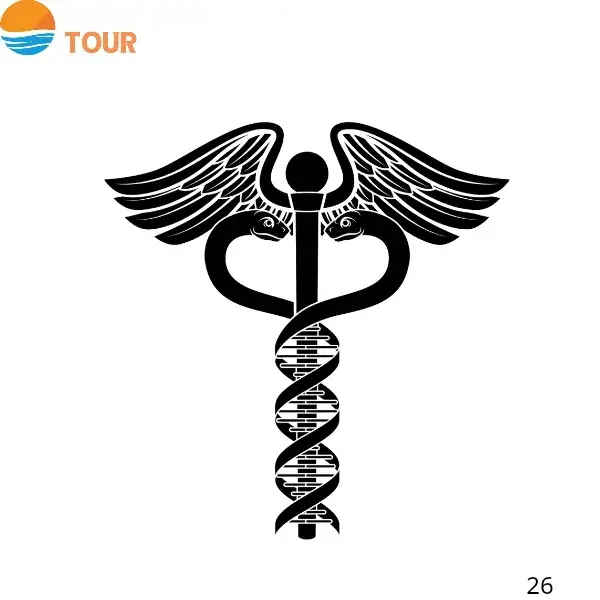
Blue Bead
The Blue Bead came to be a now no longer unusual place protecting talisman in ancient Egypt, believed to beat back the evil eye and envy. Often worn as earrings or carried as an amulet, it comes to be perceived to deliver safety to the wearer, in particular, sooner or later of travel. The bead’s color symbolized the infinite protection of the gods, supplying a sense of calm and security. As scholar James Peter noted, “The Blue Bead come to be now not truly an ornament—it comes to be a picture of divine favor, a shield in competition to misfortune and the ill will of others."
Bottom of FormThe use of these symbols come to be very now no longer an unusual place, whether or not or now no wayassist in inscriptions or amulets carried with the useful resource of the usage of tourists, and it comes to be believed that the gods themselves envelop them with their care now. below in their journeys.
you may like to read Facts about The Temple of Karnak
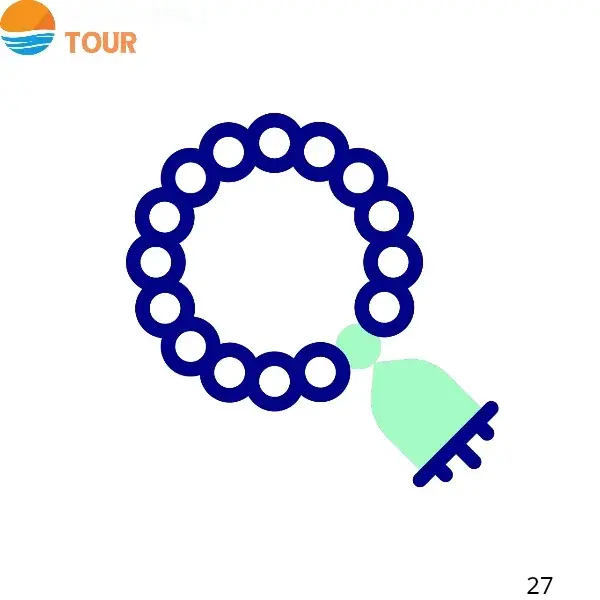
List of Famous Ancient Egyptian Symbols With Meanings: 60 Famous Ancient Egyptian Symbols (Meanings & Facts)
Symbols which include the ankh, representing existence and immortality, or the scarab beetle, symbolizing renewal and transformation, have been crucial to Egyptian everyday existence, art, and spiritual practices. Wilkinson highlights how those symbols functioned now no longer most effective as aesthetic factors however additionally as channels of divine have an effect on and magical power, presenting safety, concord, and connection to the gods to all who reputable them.
Here is a listing of 60 historical Egyptian symbols and their meanings:
Ankh (Key of Life)
The Ankh is one of the maximum recognizable symbols of Ancient Egypt. Often depicted as a pass with a loop on the top, it represents existence and immortality. The Egyptians believed the Ankh became an effective image of everlasting existence, each withinside the bodily global and the afterlife.It became generally visible inside the palms of gods and pharaohs, symbolizing their connection to existence-giving power.
2.Neighbors 𓈎
This image represents the idea of concord and network. In historical Egypt, friends have been taken into consideration an vital a part of one’s existence, and nonviolent relationships have been exceedingly valued. This image emphasized the cohesion and cooperation wanted for a wealthy society. It encourages mutual admiration and guidance, displaying how network ties have been critical for survival and fulfillment in Egypt.
3. Ushabti 𓎢
Ushabti are small collectible figurines located in tombs to serve the deceased withinside the afterlife. These statues have been believed to take at the assignment of hard work for the soul of the useless, making sure they might now no longer be paintings inside the afterlife. They are frequently depicted as mummified figures maintaining equipment and are a key a part of historical Egyptian burial rituals.
4. Lotus Flower 𓇨
The Lotus flower is an image of rebirth, creation, and the solar in Egyptian mythology. The flower blooms inside the morning and closes at night, representing the cycle of existence and death. It is frequently related to the gods, in particular with the solar god Ra. Its sensitive but sturdy petals have been believed to be an image of purity and enlightenment.
5.Eye of Horus (Wadjet) 𓂋
The Eye of Horus is an image of safety, royal power, and desirable health. It’s the attention of the god Horus, who became believed to have restoration powers after it became broken in the course of a conflict with Seth. The image is frequently used as an amulet, an idea to beat back evil and convey safety to the wearer.
6.Solver of Alos 𓎼𓉔
The Solver of Alos is an extraordinary image, frequently connected with expertise and the capacity to conquer challenges. It is stated to symbolize someone who can discover answers to complicated problems, symbolizing mind and understanding .This image might had been utilized by pharaohs and clergymen to carry expertise and a deep reference to divine knowledge.
7. Djed Pillar 𓊃
The Djed Pillar is an image of stability, strength, and patience in historical Egypt. Often related to Osiris, the god of the afterlife, it represents the backbone of the god and is ideal to represent the guide of the cosmos. This iconic pillar became additionally connected to resurrection and everlasting existence, often acting in rituals to ensure a secure adventure to the afterlife.
8. Scorpion 𓆑
The scorpion image contains twin meanings in historical Egyptian culture. While it represents threat and safety because of its venomous nature, it's also tied to the goddess Serqet, the mum or dad of the deceased .Serqet became believed to have protecting powers, defending the dwelling and the useless from damage, making the scorpion a signal of each worry and divine safety.
9. Falcon of Horus 𓅓
The falcon represents Horus, the god of the sky and kingship. With its sharp imaginative and prescient and hovering height, the falcon symbolizes vigilance and power. Pharaohs frequently related themselves with the Falcon of Horus to emphasize their divine proper to rule and their connection to the heavens, making sure their authority became each earthly and divine.
10.Head of Anubis 𓄿
The head of Anubis, the jackal-headed god, is an image of mummification and safety inside the afterlife. Anubis became believed to have manual souls to the underworld and oversee the embalming process. The jackal’s affiliation with burial grounds made it a herbal mum or dad, defending the useless from damage and making sure their secure passage into the subsequent global.
11. Cobra (Wadjet) 𓆓
The cobra, or Wadjet, is an image of safety, strength, and divine authority. Often depicted on the crowns of pharaohs, the cobra was a notion to defend the ruler with the aid of using spitting venom at enemies. It become additionally related to the goddess Wadjet, a protector of Lower Egypt, reinforcing its protecting and royal significance.
12. Sun of Wings 𓎼
The Sun of Wings symbolizes safety and divine strength. Often visible over temple entrances, it combines the lifestyles-giving electricity of the solar with the safeguarding embody of outstretched wings .This image becomes believed to defend the land from evil, offering benefits and mild from the gods to all underneath its reach.
13. Isis Holding Ankh 𓅓
The picture of Isis retaining the Ankh symbolizes lifestyles, motherhood, and divine safety. Isis, one of the maximum cherished goddesses in historic Egypt, become recognized for her magical talents and nurturing nature. When depicted with the Ankh, she represents her strength to supply lifestyles and shield her fans in each this international and the afterlife.
14. Dom Palm 𓇨
The Dom Palm tree became an image of fertility and sturdiness in historic Egypt. Its fruit, the doum nut, becomes regularly located in tombs as services for the deceased, symbolizing nourishment withinside the afterlife. The tree’s resilience in harsh environments made it an effective brand of lifestyles and endurance.
15.Keyword 𓉔
In historic Egypt, positive hieroglyphic symbols acted as "keywords," retaining deep, mystical meanings that unlocked the essence of the text. These symbols have been notion to hold magical properties, guiding readers to find divine truths or hidden understanding inside sacred writings.
16. Feather of Maat (Justice) 𓆯
The Feather of Maat represents fact, justice, and balance.It becomes used withinside the "Weighing of the Heart" ceremony, in which the coronary heart of the deceased becomes weighed in opposition to the feather to decide their worthiness for the afterlife. A coronary heart as mild because the feather signified lifestyles lived in concord with fact and order.
17. Rope of Shan 𓋴𓉔𓄿
The Rope of Shan is an image of connection and eternity. It became used to bind sacred gadgets or unite symbols, representing the everlasting bonds among the gods, the pharaohs, and the people. Its unbroken loop indicates the cyclical nature of time and the eternal strength of unity.
18. Symbol of "Ka" (Spirit) 𓈎𓄿
The "Ka" image represents the critical essence or spirit of an individual. Often depicted as upraised arms, it becomes believed to be a person's lifestyle force, accompanying them in each lifestyle and the afterlife. The Ka become sustained through services and prayers, making sure the soul endures existence.19.Sacred SerpentThe Sacred Serpent symbolizes wisdom, safety, and divine strength. It became regularly related to the goddess Wadjet, who covered kings and Egypt itself. Depicted coiled and prepared to strike, the serpent additionally represents the cycle of lifestyles and rebirth, losing its pores and skin as a metaphor for renewal.
20. Hathor Cow
The Hathor Cow represents love, motherhood, and joy. Hathor, regularly depicted as a cow or a girl with cow ears, became the goddess of music, dance, and fertility.The cow symbolizes nurturing care, and Hathor’s presence added benefits of abundance and safety to the land and its people.
21. Virtual King on Throne 𓈎
The picture of the Virtual King on a Throne indicates authority, divine rulership, and the hyperlink between the gods and humanity. Pharaohs have been visible as the earthly representatives of the gods, and this image strengthened their position as protectors and leaders of the kingdom, ruling with divine guidance.
22. Ba Bird (Spirit)
The Ba Bird, often depicted with a human head and a bird’s body, represents the soul’s ability to travel between the physical world and the afterlife. It embodies individuality and personality, visiting loved ones during the day and returning to the tomb at night, ensuring a connection between worlds.
23. Solar Boat ⛵
The Solar Boat is an effective image of the solar god Ra's adventure throughout the sky. It represents the everlasting cycle of day and night, as Ra travels via the heavens with the aid of using day and the underworld with the aid of using night. Solar boats have been additionally positioned in tombs to hold the deceased on their adventure to the afterlife.
24. Ankh with Wings 🦇
The Ankh with Wings combines the strength of existence and the divine safety of wings. This image emphasizes the existence-giving electricity of the Ankh, supported with the aid of using the safeguarding include of wings, providing each energy and protection to the ones below its care, whether or not in existence or in the afterlife.
25. Intellectual Property 𓂋𓇋
In historic Egypt, highbrow creativity became incredibly valued, regularly depicted via symbolic hieroglyphs or architectural innovations. This concept meditated the Egyptians’ pleasure of their cultural and medical achievements, whether or not in art, literature, or mathematics .Protecting and celebrating understanding became visible as a divine responsibility.
26.Royal Cartouche 𓃀
The Royal Cartouche is an oval form encircling the names of pharaohs, signifying their divine safety and everlasting legacy. This image ensured the ruler’s call could be preserved forever, emphasizing their connection to the gods and their vicinity in history.
27. Dwarf Bes 𓃀𓋴
Bes, the dwarf god, represents safety, joy, and family. Known for his fierce and comical appearance, Bes guarded against evil spirits, in particular in houses and for the duration of childbirth.He became additionally related to track and celebration, bringing happiness and protection to the household.
28.Lion Sphinx 𓋴𓊪𓉔𓇋𓈖𓇨
The Lion Sphinx symbolizes electricity, wisdom, and safety. Combining the frame of a lion with the top of a pharaoh or god, it represents the ruler's strength and divine authority.The Great Sphinx of Giza stands as an everlasting mother or father of sacred areas and the mysteries of the historic world.
29. Amon with Ram's Head 𓄿𓅓
Amon, regularly depicted with a ram’s head, symbolizes fertility, creation, and hidden strength. As one in every of Egypt’s maximum respected gods, Amon became related to the forces of existence and renewal. The ram’s sturdy and resilient nature highlighted his defensive and existence-maintaining qualities.
30. Nile Symbol (Water Rope) 𓈖
The Nile Symbol, regularly proven as a coiled rope with water markings, represents the lifeblood of Egypt.The Nile became vital for agriculture, trade, and survival. This image emphasized the river's position in maintaining the land and connecting the humans to their environment.
31. Royal Ribbon 𓂋𓇋𓃀𓃀𓈖
The Royal Ribbon represents authority and ceremonial strength. Often visible in royal imagery, it symbolized the pharaoh’s divine proper to rule and their connection to the gods .The flowing layout additionally conveyed grace, harmony, and everlasting reign.
32.Sidra Pillar 𓂧𓂋𓄿
The Sidra Pillar is a image of resilience and non secular connection.Used in sacred architecture, it became notion to guide the heavens and act as a bridge among the earthly and divine realms.This pillar embodies the iconic electricity of the gods and their position in upholding cosmic balance.
33. Sun Beetle ☀️𓋴𓅲
The Sun Beetle, or scarab, symbolizes rebirth, transformation, and the electricity of the solar. Associated with the god Khepri, it represents the everyday renewal of the solar because it rises inside the sky. Egyptians believed the scarab’s rolling of a dung ball reflected the solar’s adventure throughout the heavens, embodying advent and perseverance.
34. Thoth Monkey 𓅓🐒
The Thoth Monkey represents awareness, writing, and divine expertise. Thoth, the god of writing and intellect, turned into every so often depicted as a baboon, symbolizing vigilance and a connection to the sacred artwork of recording history. This image bolstered the significance of awareness and stability in preserving cosmic order.
35. Double Wing 𓅃𓇋𓈖𓎼
The Double Wing symbolizes divine safety and freedom. Wings have been frequently related to gods and depicted around sacred symbols to indicate the defensive electricity of the heavens. This brand additionally represents religious ascension, encouraging the soul to upward push and attain its maximum potential.
36. Buy 𓃀𓅲𓇌
In historic Egyptian culture, the act of purchasing or bartering turned into an image of stability and reciprocity. Represented in temple scenes or hieroglyphs, it illustrated the float of products and services among the humans and the gods, emphasizing concord in each of the fabric and religious realms.
37. My Papers 𓊪
The idea of "My Papers" probably refers to scrolls or documents, which have been vital in keeping expertise and recording history. Papyrus scrolls have been symbols of training and highbrow achievement, allowing the Egyptians to proportion their ideas, beliefs, and improvements throughout generations.
38. Hor Imhotep (Physician) 𓉔𓂋
Hor Imhotep symbolizes healing, awareness, and innovation in medicine. Imhotep, seen as a health practitioner and architect, turned into later deified as a god of healing. His legacy represents the significance of expertise and the pursuit of answers for the betterment of society.
39. Eye of Ra 𓂋
The Eye of Ra represents electricity, safety, and divine justice. As a counterpart to the Eye of Horus, it embodies the fiery and vigilant issue of the solar god Ra, used to thrust back evil and uphold order. It symbolizes power and the unyielding pressure of the gods.
40. Head Falcon 𓄿
The Head Falcon represents vision, majesty, and divine authority. Associated with Horus, the falcon-headed god of kingship and the sky, it symbolizes sharp belief and safety from above .Pharaohs frequently aligned themselves with this image to emphasize their connection to the divine.
41. Statue of the Kneeling King 𓈎𓇋𓈖𓎼
This statue represents humility, devotion, and a pharaoh’s provider to the gods. A kneeling king symbolizes submission to divine authority whilst wearing services to honor the gods. This imagery emphasizes that even rulers are sure via way of means of their sacred obligations to keep stability and concord inside the world.
42.رSacred Hand 𓉔𓄿𓈖𓂧
The Sacred Hand symbolizes advent and divine intervention. Often depicted in creative forms, it indicates the gods’ capacity to form lifestyles and provide blessings.It represents the relationship between divine electricity and humanity, embodying guidance and safety.
43. Royal Spear 𓋴𓊪𓄿𓂋
The Royal Spear is an image of strength, authority, and protection. Used in ceremonies and war scenes, it showcases the pharaoh's position as a defender of Egypt and an upholder of cosmic order .It additionally represents the capacity to strike down chaos and hold peace.
44. Lioness Sekhmet 𓃭𓇋𓈖𓋴𓋴
Sekhmet, the lioness goddess, embodies fierce protection, energy, and healing. Known as the "Eye of Ra," she turned into each a warrior and a healer. Her fiery nature ought to break enemies, but she turned into additionally known as upon to therapy diseases, representing stability and duality.
45. Symbol of Remembrance (Shen) 𓋴𓉔𓈖
The Shen image, a looped rope without a starting or end, indicates eternity, protection, and remembrance. Often encircling names or sacred objects, it ensured maintenance and continuity. Shen turned into an effective amulet for protecting one’s legacy throughout time.
46. Intertwined Lotus and Flower 𓃭𓏏𓅲𓋴
This image represents unity, harmony, and rebirth. The lotus and flower collectively symbolize the stability of opposites—existence and death, male and female, day and night. It emphasizes the interconnectedness of all introductions in keeping order.
47. Sacred Peacock 𓊪𓄿𓎢𓎢𓈎
The Sacred Peacock, even though uncommon in Egyptian art, symbolizes beauty, immortality, and divine watchfulness. Its iridescent feathers had been related to the heavens, serving as reminders of the gods' omnipresence and the everlasting cycle of existence.
48. Mummification Tools 𓅓𓅲𓅓𓅓𓇋𓆑𓇋𓎢𓄿𓏏𓇋𓈖
These tools, depicted in tombs and rituals, constitute maintenance and education for the afterlife. Used via way of means of priests, they ensured the frame remained intact for the soul’s adventure. Each device carried sacred significance, connecting existence and death.
49. Head of Crocodile (Sobek) 𓎢𓂋𓎢𓂧𓇋𓃭
Sobek, the crocodile-headed god, symbolizes energy, fertility, and protection. As a parent of the Nile, he managed the waters and ensured prosperity. Sobek’s fierce nature additionally made him a protector of pharaohs and the kingdom.
50. God Ra Horus 𓉔𓂋𓅲𓋴
Ra Horus is the fusion of Ra, the solar god, and Horus, the sky god. This mixed deity represents the unification of celestial energy and divine kingship.It indicates the everlasting rule of the gods and the pharaoh’s divine connection to them.
51. New 𓈖𓅃
The idea of "New" in Egyptian symbolism frequently represents regeneration, rebirth, and the cyclical nature of existence. It displays the consistent renewal of existence, from the once-a-year Nile floods to the soul’s adventure inside the afterlife, emphasizing desire and transformation.
52. Cosmic Serpent 𓋴𓂋𓊪𓈖𓏏
The Cosmic Serpent symbolizes introduction, infinity, and the stability between order and chaos. Often depicted as Ouroboros, a serpent ingesting its tail, it represents the everlasting cycle of existence and death. This historical image displays the interconnectedness of the universe and its chronic renewal.
53. Royal Bead Chain 𓎢𓉔𓄿𓇋𓈖
The Royal Bead Chain is an image of status, wealth, and divine favor. Often worn via way of means of pharaohs and nobles, it highlights their connection to the gods and their role as rulers. Each bead is a notion to hold protecting and symbolic energy, linking earthly and heavenly realms.
54. Symbol of "Sa" (Protection) 𓋴𓄿
The "Sa" image represents divine safety and safety.It is frequently worn as an amulet or depicted in temple reliefs to protect people from harm. This brand reassured humans of the gods' watchful care over their lives and journeys.
55. Head of Dog (Anubis) 𓄿𓈖𓅲𓃀𓇋𓋴
Anubis, the jackal-headed god, is the protector of the lifeless and grasp of mummification. The head of Anubis symbolizes steering and safety in the course of the soul’s adventure to the afterlife. He guarantees that the deceased is judged pretty and effectively reaches their everlasting resting place.
56. Sacred Fish 𓆑𓇋𓋴𓉔
The Sacred Fish symbolizes fertility, abundance, and the life-giving strength of the Nile. Representing sustenance and prosperity, fish have been additionally related to rebirth because of their affiliation with water, and the supply of lifestyles in historic Egyptian culture.
57. Owl Symbol of Wisdom 𓅃𓃭
The owl is an image of wisdom, knowledge, and mystery. In hieroglyphs, it represents the letter "M" and indicates alertness and insight .Egyptians respected owls as silent watchers of the night, embodying the strength of remark and understanding.
58. Royal House 𓂋𓇌𓄿𓃭 𓉔𓅲𓋴
The Royal House symbolizes the pharaoh’s lineage, authority, and divine proper to rule .Often depicted as a palace or enclosure, it reinforces the sacred position of the king because the protector and unifier of Egypt.
59. Goddess Bastet (Cat) 𓎢𓄿𓏏
Bastet, the cat goddess, symbolizes safety, fertility, and domestic lifestyles. Known for her twin nature, she embodies each nurturing care and fierce safety. Cats have been sacred in her honor, representing grace, agility, and divine guardianship.
60.Phoenix (Benu) - 𓅲
The Phoenix, or Benu bird, represents rebirth, immortality, and the growing sun. Associated with the advent and the cycle of lifestyles, it was believed to perch at the sacred Benben stone, heralding new beginnings. The Phoenix is an undying brand of renewal and everlasting lifestyles. These symbols have been utilized in nonsecular rituals, each day lifestyles,and funerary art, and feature sturdy meanings in Pharaonic culture.
A Blend of Relaxation and Adventure
For a perfect mix of vibrant city life and serene beach escapes, the Cairo and Sharm El Sheikh Vacation Package is the ultimate choice. Discover the energy of Cairo before unwinding on the crystal-clear shores of Sharm El Sheikh.
Journey from the capital to the Mediterranean with the 5 Days Cairo Alexandria Tour , exploring the iconic Pyramids before diving into Alexandria’s rich Greco-Roman history and stunning coastal views.
Indulge in a comprehensive Egyptian getaway with the 11 Days of Classic Egypt, Cairo, Nile Cruise & Red Sea , blending cultural exploration with the pristine beauty of the Red Sea’s beaches.
Why Did Ancient Egyptians Use Symbols?
Ancient Egyptians used symbols such as What are some traditions in Egypt As a method of conversation and expression, deeply embedding them into their day-by-day existence, religion, and expertise of the universe. These symbols, frequently known as the "phrases of the gods," performed a vital position in passing down the tradition and ideals of historic Egypt from one era to the next.Each image pondered the energy and information of the gods, illustrating a big range of thoughts including truth, faith, fertility, wealth, success, happiness, and more.
What Does a Staff Symbolize in Ancient Egypt?
In historic Egypt, a workforce symbolized authority and energy. The Scepter of Was, for example, becomes an image of manipulation and energy, frequently depicted withinside the fingers of Pharaonic kings and gods.
It becomes related to correct success and sovereignty, representing the kingdom of deities over mortals even as making sure of the king's prosperity on earth .The Crook and Flail, some other workforce-like image, represented kingship and absolutely the authority of the pharaoh. The Crook symbolized the pharaoh's position as a caretaker and shepherd of his people, even as the Flail emphasized the fertility of the land.
What Symbols Did the Pharaoh Use?
Pharaohs in historic Egypt used diverse symbols to suggest their divine authority and connection to the gods. The Ankh, symbolizing everlasting existence and safety, become regularly depicted inside the fingers of Pharaohs and deities. The Eye of Horus became another effective image utilized by Pharaohs for safety in opposition to evil spirits and to ensure correct health.
Additionally, the Crook and Flail have been emblematic of kingship, representing each of the protecting and authoritative elements of pharaonic rule.
Find the Perfect Egypt Tour for You
We offer a wide range of Egypt tour packages tailored to suit every traveler’s dream, from adventure seekers to history lovers.
For those looking for a well-rounded cultural experience, our Egypt Classic Tours provide a deep dive into the country’s most iconic sites, from the Great Pyramids to the majestic temples of Luxor and Aswan.
If luxury is what you seek, our Egypt Luxury Tours deliver a first-class experience with five-star accommodations, exclusive guided tours, and VIP services to make your journey unforgettable.
Start Your Egyptian Adventure Today!
Embark on the trip of a lifetime and uncover the magic of Egypt. Whether you're exploring ancient wonders, cruising the Nile, or relaxing by the Red Sea, we have the perfect tour for you. Book your dream vacation today!
Conclusion
Egyptian symbols have transcended time, providing a captivating glimpse into the religious and cultural ideals of historic Egypt. From the protecting energy of the Eye of Horus to the existence-maintaining Ankh and the divine steerage of the Phoenix, those symbols carried profound meanings that safeguarded and stimulated people on their journeys. Each image becomes intricately tied to their expertise of the universe, emphasizing balance, safety, and harmony.
As we discover those historic icons, we discover now no longer simply the tales of a terrific civilization but additionally undying instructions approximately resilience, peace, and the pursuit of well-being. Whether used as amulets, creative elements, or sacred talismans, those symbols continue to be an effective reminder of humanity’s enduring quest for safety and internal peace. Let those historical symbols manual your journey, simply as they did for the Egyptians millennia ago.
Popular Categories
Popular Posts

Top Alexandria Beaches You Must Visit 2026
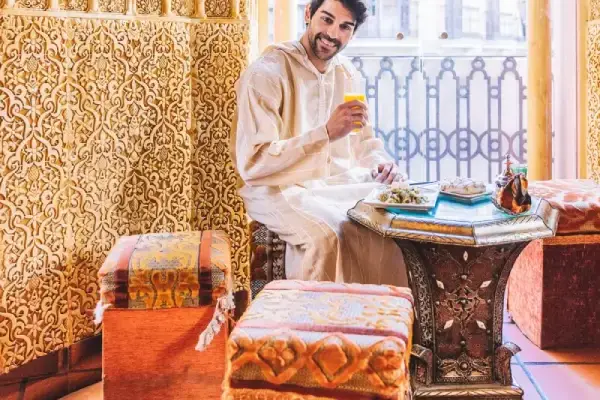
What are the important holidays in Egypt?
